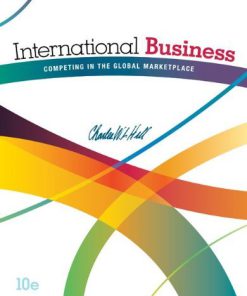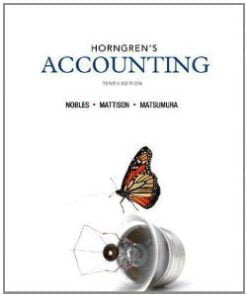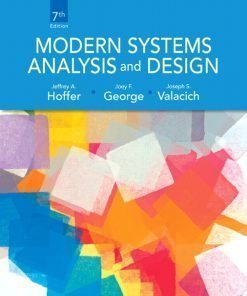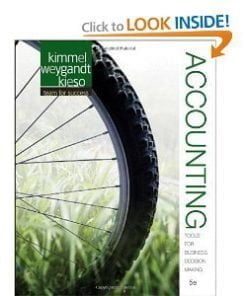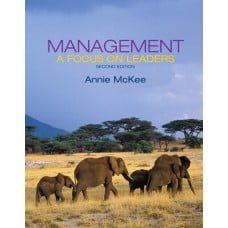Intermediate Accounting Kieso 13th Edition Solutions Manual
$35.00 Original price was: $35.00.$26.50Current price is: $26.50.
Intermediate Accounting Kieso 13th Edition Solutions Manual
Intermediate Accounting Kieso 13th Edition Solutions Manual
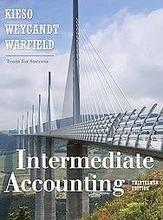
Product details:
- ISBN-10 : 0470423684
- ISBN-13 : 978-0470423684
- Author: Kieso Weygandt Warfield
INTERMEDIATE ACCOUNTING by Kieso, Weygandt, and Warfield is, quite simply, the standard by which all other intermediate accounting texts are measured. Through thirty years and twelve best-selling editions, the text has built a reputation for accuracy, comprehensiveness, and student success. The Thirteenth Edition maintains the qualities for which the text is globally recognized, and continues to be your students’ gateway to the profession! Volume I is comprised of Chapters 1-14.
Each study guide chapter is comprised of a detailed chapter review, demonstration problems, true/false, multiple-choice, matching questions, and copmrehensive exercises. Solutions to study guide questions are provided.
Table contents:
1 The Canadian Financial Reporting Environment 1-1
Capitalizing on Financial Reporting 1-1
Preview of Chapter 1 1-3
1.1 Financial Statements and Financial Reporting 1-3
Accounting and Capital Allocation 1-4
Stakeholders 1-5
Objective of Financial Reporting 1-6
Information Asymmetry 1-9
1.2 Standard Setting 1-11
Need for Standards 1-11
Parties Involved in Standard Setting 1-12
1.3 Generally Accepted Accounting Principles 1-17
GAAP Hierarchy 1-17
Professional Judgement 1-18
1.4 Challenges and Opportunities for the Accounting Profession 1-18
Impact of Technology 1-20
Sustainability Reporting 1-21
Oversight in the Capital Marketplace 1-23
Centrality of Ethics 1-24
Standard Setting in a Political Environment 1-25
Principles versus Rules 1-26
Conclusion 1-26
2 Conceptual Framework Underlying Financial Reporting 2-1
Measuring the Unconventional 2-1
Preview of Chapter 2 2-3
2.1 Conceptual Framework 2-3
Rationale for a Conceptual Framework 2-3
Development of the Conceptual Framework 2-4
Information Asymmetry Revisited 2-5
Objective of Financial Reporting 2-5
2.2 Qualitative Characteristics of Useful Information 2-6
Fundamental Qualitative Characteristics 2-6
Enhancing Qualitative Characteristics 2-13
Trade-offs 2-14
2.3 Elements of Financial Statements 2-14
Assets 2-15
Liabilities 2-16
Equity 2-17
Revenues/Income 2-18
Expenses 2-18
Gains/Losses 2-18
2.4 Foundational Principles 2-19
Recognition/Derecognition 2-20
Measurement 2-25
Presentation and Disclosure 2-32
2.5 Financial Reporting Issues 2-34
Principles-Based Approach 2-35
Financial Engineering 2-35
Fraudulent Financial Reporting 2-36
2.6 IFRS/ASPE Comparison 2-37
Looking Ahead 2-37
3 Data, Decisions, and Measurement 3-1
How CEO Travel Patterns Can Be Used to Predict Mergers and Acquisitions 3-1
Preview of Chapter 3 3-3
3.1 Data and Decisions 3-3
Data, Digitization, and Digitalization 3-3
Decision-Making in Financial Reporting 3-5
3.2 Measuring Financial Statement Elements 3-10
Valuation Techniques 3-10
Value in Use Measurements 3-15
Disclosures Relating to Measurement 3-16
3.3 Measuring Fair Value Using IFRS 13 3-17
3.4 Present Value Concepts 3-20
The Nature of Interest 3-20
Fundamental Variables in Present Value Calculations 3-21
Different Ways to Perform the Calculations 3-23
Some Additional Calculations 3-31
3.5 IFRS/ASPE Comparison 3-33
A Comparison of IFRS and ASPE 3-34
4 Reporting Financial Performance 4-1
Making Money out of Thin Air 4-1
Preview of Chapter 4 4-3
4.1 Performance 4-3
Business Models and Industries 4-3
Communicating Information about Performance 4-7
4.2 Quality of Earnings/Information 4-8
4.3 Measurement of Income 4-14
4.4 Discontinued Operations 4-16
Component of an Enterprise 4-16
Assets Held for Sale 4-17
Measurement and Presentation 4-18
4.5 The Statement of Income and the Statement of Comprehensive Income 4-20
Presentation 4-20
4.6 The Statement of Retained Earnings and the Statement of Changes in Equity 4-30
Presentation of the Statement of Retained Earnings 4-31
Presentation of the Statement of Changes in Equity 4-32
4.7 Disclosure and Analytics 4-34
Disclosure 4-34
Analytics 4-34
Non-GAAP Measures 4-35
Other Key Measures 4-35
4.8 IFRS/ASPE Comparison 4-36
A Comparison of IFRS and ASPE 4-36
Looking Ahead 4-37
Appendix 4A Application of the Cash and Accrual Bases of Accounting 4-37
Differences between Cash and Accrual Bases 4-37
Conversion from Cash Basis to Accrual Basis 4-39
Theoretical Weaknesses of the Cash Basis 4-42
5 Financial Position and Cash Flows 5-1
Toward Better Disclosure 5-1
Preview of Chapter 5 5-3
5.1 Usefulness of the Statements of Financial Position and Cash Flows from a Business Perspective 5-4
Analyzing a Statement of Financial Position 5-4
Assessing Earnings Quality 5-4
Assessing the Creditworthiness of Companies 5-4
5.2 Usefulness and Limitations of the Statement of Financial Position 5-5
Usefulness 5-5
Limitations 5-6
5.3 Classification in the Statement of Financial Position 5-7
Monetary versus Nonmonetary Assets and Liabilities 5-8
Financial Instruments 5-8
Elements of the Statement of Financial Position 5-9
5.4 Preparation of the Classified Statement of Financial Position (Balance Sheet) 5-11
Current Assets 5-12
Non-current Investments 5-17
Property, Plant, and Equipment 5-17
Intangible Assets and Goodwill 5-19
Other Assets 5-20
Current Liabilities 5-20
Long-Term Debt and Liabilities 5-22
Owners’ Equity 5-22
Statement of Financial Position Format 5-24
5.5 Other Required Disclosures 5-25
Contingencies and Provisions 5-25
Accounting Policies 5-26
Contractual Obligations 5-26
Additional Detail 5-27
Subsequent Events 5-27
5.6 Techniques of Disclosure 5-27
Parenthetical Explanations 5-27
Notes 5-28
Cross-References and Contra Items 5-28
Supporting Schedules 5-29
Terminology 5-29
5.7 Purpose, Content, and Format of a Statement of Cash Flows 5-29
5.8 Preparation of the Statement of Cash Flows 5-32
5.9 Usefulness of the Statement of Cash Flows 5-37
Financial Liquidity 5-38
Financial Flexibility 5-38
Perspectives 5-38
5.10 IFRS/ASPE Comparison 5-41
A Comparison of IFRS and ASPE 5-41
Looking Ahead 5-42
Appendix 5A Ratio Analysis: A Reference 5-42
Business Risks 5-42
Financial Ratios 5-43
People also search:
Intermediate Accounting
Intermediate Accounting Kieso Weygandt Warfield
Intermediate Accounting Kieso Weygandt Warfield 13th
Intermediate Accounting Kieso Weygandt Warfield 13th Solutions Manual
Intermediate Accounting Kieso 13th Edition Solutions Manual
Related products
Solution Manual
International Business Competing in the Global Marketplace Hill 10th Edition Solutions Manual
Solution Manual
Solution Manual
Solution manual for Accounting: Tools for Business Decision Making Kimmel Weygandt Kieso 5th Edition
Solution Manual
Solution Manual
Solution Manual
Solution Manual for Data Structures and Other Objects Using C++, 4/E Michael Main, Walter Savitch
Solution Manual




